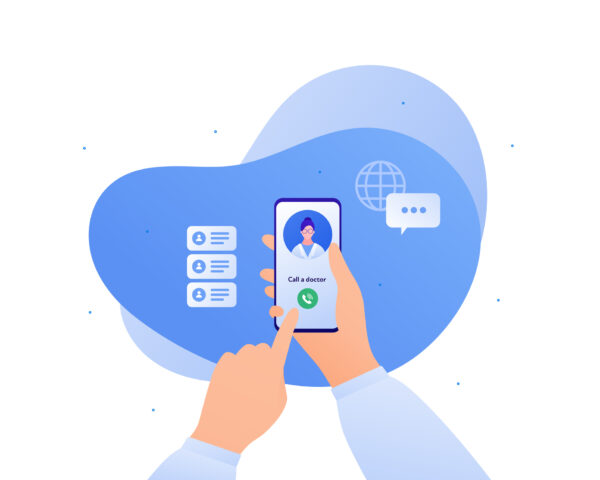
After an initial spike up to 32% early in the Covid-19 pandemic, telehealth use for physician office and outpatient visits have stabilized, ranging from 13% to 17%, according to a new report. But even with the drop, telehealth use is still 38 times higher than before the pandemic.
The report, which analyses claims data, was released Friday by McKinsey & Company.
Report authors were struck by how steady telehealth use has remained — and at a high level — since last June.
“After the initial spike in April 2020, everyone was wondering whether it would plateau or drop, and by how much,” said Oleg Bestsennyy, partner at McKinsey and report author, in an email. “What’s interesting is that overall rates remained 30-40 times higher [than] pre-pandemic levels, even with some mild fluctuations.”
Though telehealth utilization has leveled out, there is still variation in uptake across specialties.
For example, telehealth uptake is highest in psychiatry (50%), followed by substance use disorder treatment (30%), endocrinology (17%) and rheumatology (17%).
“The level of telehealth uptake for psychiatric consultations was also interesting to see,” Bestsennyy said. “More than half of all such visits are now done through telehealth channels, a trend that is rippling through a wide range of behavioral health issues and visits.”
Changes in consumer perception of telehealth played a key role in its uptake.
Around 40% of consumers said that they will continue to use telehealth going forward, up from 11% of those using it prior to the pandemic.
In fact, since January, about 20% of visits to an urgent care center have taken place via video or telephone. Similarly, 30% of visits to a health clinic at a pharmacy or retail store and 29% of pediatrician visits have been conducted through video or over the phone.
Further, 40% to 60% of consumers are interested in broader virtual health solutions, such as a digital front door or lower-cost virtual-first health plans.
Providers’ perceptions on telehealth have shifted as well. Over half (58%) of physicians continue to view telehealth more favorably now than they did before the Covid-19 crisis, though that perception has fallen slightly since last September (64%). A majority (84%) of physicians were offering virtual visits as of April this year, and 57% said they would prefer to continue offering it.
But reimbursement remains a hurdle, with 54% of physicians saying they would not offer virtual care at a 15% discount compared to in-person care.
Photo: Anastasia Usenko, Getty Images










